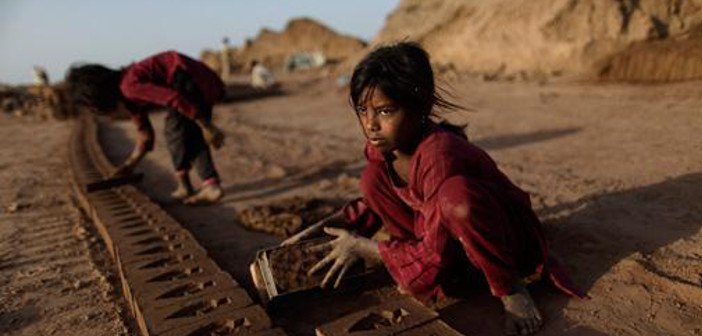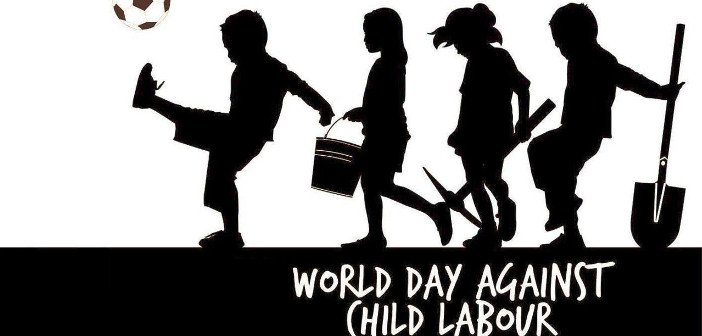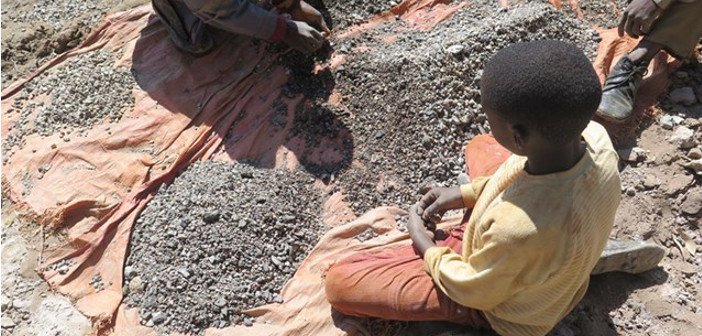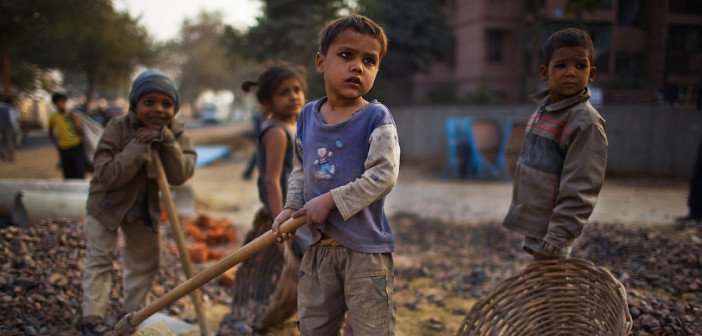Preventing Child Labour is Everybody’s Business
Today, approximately 168 million children are being subjected to child labour. That’s according to the International Labour Organisation (ILO), who estimate that there are still hundreds of millions of young boys and girls suffering mentally and physically due to hard and sometimes hazardous work across all continents. Unregulated work, human rights abuses, and poverty has forced countless children around the world to sacrifice their childhoods in order to work demanding jobs that not only affect their ability to go to school and get an education, but also their internal development, basic freedoms, and even their health.
Since 2000, child labour rates have dropped by one third with 40% less girls and 25% less boys working across all economic sectors. Although ILO predicts that the number of children in work will fall to 107 million 2020, that still leaves over 100 million children – some from as young as five years old – working in restaurants, mines, quarries, building sites, hotels, farms, and some of the worst forms of child labour as defined by the organisation themselves which includes prostitution, trafficking, slavery, and working in the drug trade. ILO estimates that over half of child labourers are currently being subjected to these worst forms of work.

In 2002, the group promoted the first official World Day Against Child Labour (WDACL). In conjunction with the UN and other labour and employment organisations around the world, the day aims to raise awareness of the harmful and depriving nature of child labour, and to incite activism to further reduce the amount of young kids currently damaging their mental and physical health by being forced to work unsuitable jobs.[pullquote]Since 2000, child labour rates have dropped by one third with 40% less girls and 25% less boys working across all economic sectors.[/pullquote]
This Sunday, June 12th, marks the 14th annual World Day Against Child Labour. Over the years, the ILO have focused on a number of specific issues such as promoting quality education, eliminating children in hazardous work, and domestic work, extending social protection, and enforcing human rights laws. The focus of this year’s WDACL is to end child labour in supply chains – an issue the organisation deems is “everyone’s business.” Globalisation and the expansion of the market has led to an increase in demand for products and services which in turn allows for larger and more complex supply chains in agriculture, manufacturing, and the service industries. So, given the fact that there are still so many child labourers around the world, the risk of this human rights violation being present across all chains remains a possibility.
This increased need for rapid and cheap production and distribution is not just damaging the reputations of businesses refusing to ensure their suppliers are not engaging in child labour, but it’s also taking young children out of schools, denying them a childhood, and exposing them to dangerous, and sometimes lethal, working conditions. While many child labour abuses exist in regions, sectors, and businesses that are lacking in appropriate legislation and workers rights as it is, recent reports have revealed that such violations may be occurring closer to home too.

Early this year, Amnesty International and Afrewatch published a report stating that many major electronic manufacturers including Apple, Sony and Samsung were failing to complete standard checks to ensure the cobalt used in their lithium-ion batteries is not being mined by children. The document entitled ‘This is what we die for’ exposes the means by which cobalt enters supply chains from mines in the Democratic Republic of Congo where thousands of adults and children are employed to dig out these raw materials.
The DRC produces over 50% of the world’s cobalt – much of which find its way to suppliers and battery manufacturers in Asia where it is sold to major electronic and car companies. Although these businesses remain vehemently opposed to child labour, according to Amnesty International researcher Mark Dummett, their zero tolerance policies are “not worth the paper (they are) written when the companies are not investigating their suppliers.”
The glamorous shop displays and marketing of state of the art technologies are a stark contrast to the children carrying bags of rocks, and miners in narrow manmade tunnels risking permanent lung damage.

While most Western countries may not be directly involved in the worst forms of child labour, the potential risk of engagement through the use of suppliers who are not being adequately investigated could easily allow the possibility to become a reality. However, banning child labour outright is simply not an option for the majority of countries where the problem is dominant. In places like Somalia, Pakistan, India, Mexico and others that have extremely high risks of association with child labour, many families living in poverty have no other option but to send their children to work.
In 2014, the Indian government introduced legislation in an attempt to reduce the vast number of young boys and girls working dangerous jobs, while also ensuring that livelihoods did not suffer. The National Child Labour Project focused on children in the worst forms of child labour, and provided them with loans and alternative means of making a living that did not involve hazardous work. Despite this advancement, there are still millions of children in India involved in the manufacturing and agricultural industries.

Child labour is a complex issue – it cannot be eliminated by simply banning work for all children under a certain age. But by fighting for legislation specific to individual countries, implementing measures to ensure livelihoods do not suffer, and tackling the issue at its root – poverty – it can be prevented.[pullquote]In places like Somalia, Pakistan, India, Mexico and others that have extremely high risks of association with child labour, many families living in poverty have no other option but to send their children to work.[/pullquote]
This World Day Against Child Labour, ILO are asking businesses to investigate each stage of their supply chain to ensure they know exactly where their products are coming from and so they are not associating with child labour. To achieve this they’ve launched a checklist app to encourage child labour-free company operations, which includes information about eliminating children from supply chains, reviewing legislation, and ways that child labour can be prevented without livelihoods and businesses being negatively affected. They are also promoting a number of panels and forums to tackle the issue, as well as their online helpdesk which holds vital information concerning labour standards and practices around the world.
